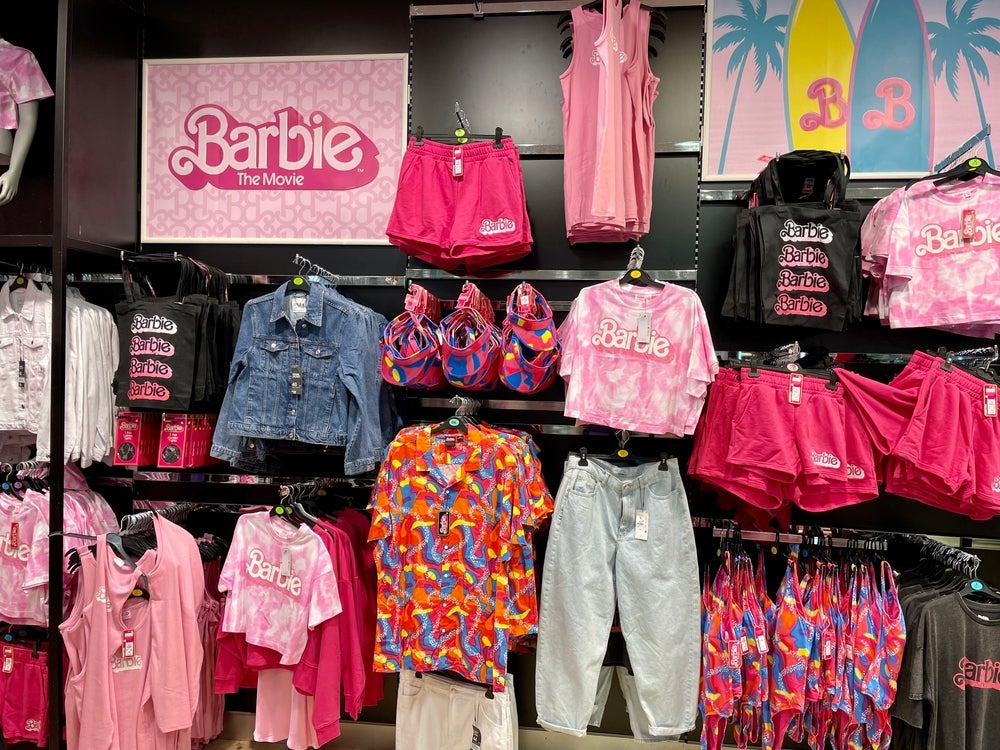
Price negotiation is a critical, and often stressful, aspect of apparel sourcing – but it is also integral to the health of any brand’s bottom line, so getting it right is crucial. Here industry consultant Malcolm Newbery offers some key tips in negotiation tactics.
Sell minus buy equals margin
This is the starting point of all fashion buying. The price at which a retailer sells, and the price at which it buys from a manufacturing supplier, are at the absolute centre of the fashion industry supply chain. They determine the gross margin that a branded or own label retailer makes. The gross margin has to be sufficient to cover the company’s overheads and enable it to make a satisfactory profit.
The price at which the retailer sells is itself set by what it thinks the consumer is prepared to pay, and by how many consumers will buy at that price. Effectively, the retailer’s buying and merchandising people hold up a garment and ask the question “What will Wendy (Wendy is my consumer. I always call my consumer Wendy) pay for this”? It is solely a retail decision.
The price at which the supply chain manager buys from the supplier is negotiated. It is a two-way street, not a single decision made unilaterally by the retail company.
How well do you really know your competitors?
Access the most comprehensive Company Profiles on the market, powered by GlobalData. Save hours of research. Gain competitive edge.

Thank you!
Your download email will arrive shortly
Not ready to buy yet? Download a free sample
We are confident about the unique quality of our Company Profiles. However, we want you to make the most beneficial decision for your business, so we offer a free sample that you can download by submitting the below form
By GlobalDataSee Also:
Therefore, it is tempting to strive to buy at the lowest possible asking price. But the lowest possible supplier buying price may not be the lowest total cost for the retailer. There are a number of open and hidden costs that an astute supply chain negotiator should factor in.
Open and hidden costs that affect the buy price
These include the open extras that affect the lowest total cost (sometimes called the final landed cost), namely:
- Who is buying the fabric: the buyer or the supplier?
- How will the shipping be paid: by the retailer (FOB, free on board), or by the supplier (CIF, cost insurance and freight)?
- What duties or taxes are payable in the supplier’s country?
- What duties or taxes are payable at the port of import?
- When does the retailer have to pay the supplier (after delivery to the retailer’s warehouse, or by letter of credit at the point of export)?
Plus, there are also the hidden extras that are difficult to quantify, but which a good negotiator must understand and take into account:
- Does the supplier have a good or poor record on timely delivery? Lateness leads to lost sales.
- Does the supplier have extra skills that avoid the buyer incurring cost? These typically include
- – Design. The ability to understand and adapt the retailer’s artwork ideas;
- – Pattern making. CAD/CAM systems that turn design into cutting markers;
- – Good quality control. Poor adherence by manufacturers to sizing is a major headache, particularly for brands;
- – Electronic skills. One example is the ability to deal with and handle various textile labelling requirements;
- – Ability to package either solid or in ratio. In ratio is when each carton or hanging rail has some of each colour and each size. This minimises work at the retailer’s distribution centre;
- – Language and communication skills. Misunderstandings cost time and money.
Valuing the extra costs
So, how does an experienced supply chain manager put a value onto these open, and particularly, the hidden extras? It has to be mostly intuitive, but there should at least be some attempt at quantification.
The starting point is clearly the targeted gross margin. Whether the business is a brand or an own label retailer, every supply chain manager has (or should have) a given gross margin target, in order to cover the overhead costs of the business and make an acceptable operating profit.
For the purposes of this article, we are going to use a hypothetical garment, sold to both a brand and an own label retailer by an Asian garment manufacturer for the same price.
The table should be read as explained below. The figures are simply currency values, expressed as GBP. Most purchases from Asia are still configured in US$, but adding currency exchange rates will muddle the complicated target price still further. In this example the garment will be retailed in the UK, using UK sales tax (VAT).
The explanation of the table for both the brand and the own label retailer is as follows:
The brand intends to sell to the retailer for £40. It suggests that the retailer uses a mark-up of 3 (equivalent to a retail margin of 60%) and sells to the consumer (Wendy) at £120. The brand itself wants to make a gross margin of 40% on its wholesale price of £40. It therefore wants to source from its supplier for £24.
The own label retailer also wants to source from the manufacturer for £24. This is so it can sell to Wendy for a price on the ticket of £82.29, and make a retail gross margin of 65% (a mark-up of 3.4286).
But the manufacturer supplier will not accept £24. It insists on £26. If both supply chain managers accept the supplier’s price, then the brand is now making 35% not 40%, and the retailer 62% not 65%. Although both supply chain managers will attempt to negotiate the manufacturer down from £26 to as near to £24 as possible, both will evaluate whether the negotiating factors justify paying the extra £2. An extra £2 on top of the target £24 is an extra 8.33%. How can it be justified?
Each of the open and hidden “extras” will have to be intuitively quantified, and used in negotiation. If the supplier is a CMT (cut make and trim) manufacturer, it will have none of the open and hidden skills listed above. The negotiating arguments could proceed as follows from the point of view of the supply chain manager, who says (or thinks):
- We expect you to buy and pay for the fabric, in advance of manufacture. Saving to us, three months of cash flow and the interest on borrowed money on approximately 40% of the total manufacturing offer price.
- We expect you to pay the shipping CIF. Could be 5% of the garment value.
- We will pay 30 days after receipt, not on letter of credit at the point of export. Approximately two months of cash flow and the interest on borrowed money.
- We will not produce a sample. You will do it from our artwork. Small monetary saving but takes workload away from our sample room, and “proves” that the supplier understands our garment.
- You will use your CAD/CAM to make the marker. Small monetary saving but makes the supplier responsible for the efficient use of fabric.
- You will manage quality control, and adherence to our specifications and size charts. Any defective garments will not be paid for.
- You will accept all our labelling requirements electronically and produce, as part of the order, collar labels, care labels and country of origin labelling.
- You will pack in ratio. This will save time and space at our warehouse, as the initial allocation to our stores will go out as in ratio cartons or rails. Quite a big saving.
My buyer’s educated guess estimates that this is worth at least 10% on top of a CMT price. So it is worth doing, and it would be good negotiation!
The manufacturer supplier’s view
The supplier has a different price negotiation strategy. It is based on the supplier’s costing, which was done when the specification was delivered. As far as the supplier is concerned, it is happy to make for either the brand or the own label retailer, as long as it gets supplier prices that fill the capacity of the factory with profitable work. Capacity in the clothing industry is measured in sewing hours. The supplier’s costing is in the table below.
The explanation of the costing is:
- In theory the supplier would be happy to sell for £24.76. That would give him a profit of 10% on top of cost, which is what he has targeted.
- In practice, the supplier may be prepared to sell for as little as £23.50 (which would still give him a profit of £0.99 or 4.2%), depending on issues such as:
- – How full the factory is right now;
- – The state of the forward order book;
- – The timing within the manufacturing calendar year (manufacturers have busy and quiet periods);
- – Whether the supplier really wants to do business with that retailer or brand;
- – Whether it is a new customer that the manufacturer has targeted.
In this situation:
- Materials (including a wastage allowance not shown in this example) are 40.4% of the theoretical offer from the costing. This is realistic from my own experience of the percentage share of a manufacturing price that is material.
- Production is 37.6%. Again, this is realistic from my own experience.
- In a very competitive clothing manufacturing world, very few suppliers make more than 10% on top of cost.
- But the supplier is determined to try for a slightly better selling price, because he expects the retail supply chain manager to argue for the added value services explained in the section above. If he gets it, he has a nice little negotiation cushion.
The acceptable price negotiation range
Most savvy and experienced supply chain managers, and their suppliers, go into the negotiation with three numbers in their heads. They are:
- The buy/sell price they would like to achieve (best case scenario);
- The fall-back position they are prepared to accept (worst acceptable case scenario);
- Anything in-between that the negotiation produces.
For the example used above, these figures are:
In conclusion, the supply chain manager is prepared to pay £26.00 and accept a slightly lower worst case scenario margin, because he thinks he has obtained some added value benefits. The supplier is very happy to have achieved an offer price of £26.00. He has his cushion, and will make an impressive 13.4% profit on the deal. It’s a win-win situation. I wish all negotiations were like this.








